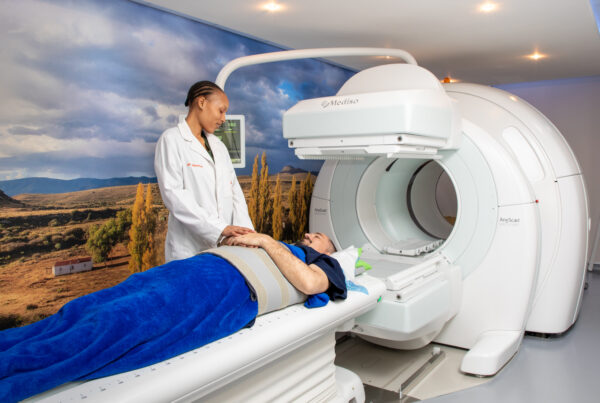On the evening of 10 August 2014, world-renowned actor Robin Williams bid his wife goodnight. The next morning, the news media reported that the Oscar-winning actor had taken his own life. The world soon learned that the beloved actor was suffering from a condition that even he was unaware of.
Robin Williams was diagnosed with Lewy body dementia following a postmortem. A recent film not only aims to put to rest the assumptions about his death, but to also raise awareness about the third most common form of dementia.
Robin Williams’ Journey With Lewy Body Dementia
“Robin was losing his mind and he was aware of it. Can you imagine the pain he felt as he experienced himself disintegrating?” the actor’s widow, Susan Schneider Williams, wrote in an editorial titled ‘The Terrorist Inside My Husband’s Brain’. The editorial was published in 2016 in the journal Neurology. It details the last few years of William’s life as he battles the condition.“My husband was trapped in the twisted architecture of his neurons and no matter what I did I could not pull him out.”
Susan detailed how Williams underwent numerous tests and scans and tried new medications. He even took up physical therapy, self-hypnosis, and yoga all in an effort to ‘reboot his brain’.
Unfortunately, nothing worked. Susan revealed how Robin battled with symptoms which included intense anxiety. He even experienced a panic attack while filming “Night at the Museum 3” during the spring of 2014. T panic attack was triggered by her husband’s trouble with remembering “even one line”, which was bizarre considering that he had remembered hundreds of lines without error while performing on Broadway three years before.
“I experienced my brilliant husband being lucid with clear reasoning 1 minute and then 5 minutes later, blank, lost in confusion,” she wrote.“I was powerless in helping him see his own brilliance.”
Susan hoped that by penning the editorial, neurologists all over the world will use Robin’s story and turn it into something meaningful through their work and wisdom, and she’s echoed the same sentiments in a recent documentary focused on the actor’s last years.
Robin’s Wish

Peter Hapak for TIME
Robin’s Wish is a documentary that sheds light on the actor’s final days and also details the comedian’s fight with Lewy Body Dementia.
“The reason this film needed to get made was because Robin deserved better, as a human who gave so much to us all, the idea that when he passed the real tragedy of his life is that he didn’t have an answer to what happened to him up until the end. He never got to know what this thing was.” Filmmaker Tylor Norwood told Sky News.
The documentary features the late actor’s friends, family, and colleagues sharing their thoughts on who he was as a person, as well as his final years and days. Susan reached out to Norwood to make the film because she wanted to raise awareness around the issue as well as possibly help others.
It’s clear that they’ve both accomplished their goals because following the release of Robin’s Wish, awareness of the disorder has risen in recent years.
So, what is Lewy Body Dementia?
Lewy body dementia (LBD) happens when excess deposits of the protein alpha-synuclein (Lewy bodies) begin to accumulate and clump up inside neurons. This then causes damage to certain parts of the brain, which then leads to a neurocognitive decline.
There are two forms of Lewy body dementia: Dementia with Lewy bodies (DLB) and Parkinson’s disease dementia.
What are the symptoms?
According to his widow, Robin Williams began to experience stomach pains. Additionally, his hand started trembling, and he had terrible insomnia. He also battled spiraling anxiety.

Actor Robin Williams poses for a portrait on Nov. 5, 2011, in Beverly Hills, Calif. Dan Steinberg/Invision/AP
“It was very out of character for Robin to be so paranoid. And that was the start of this 10 months drumbeat of increasing symptoms, and the thing with LBD is the symptoms don’t come all at once – they change. So they’re incredibly confusing to the patient and caregiver,” she shares.
Lewy body dementia is a progressive disease, and as such, symptoms process over time. Due to its effect on brain neurons, symptoms associated with the disorder can include:
- A loss of mental function to the point where it impacts the patient’s daily life and activities
- Changes in concentration, attention, alertness, and wakefulness
- Visual hallucinations
- Problems with movement and posture, including slowed movements, difficulty walking, and muscle stiffness
- REM sleep behavior disorder
- Changes in behavior and mood, including depression, anxiety, and apathy
Why is it so hard to diagnose Lewy body dementia?
Robin was diagnosed with Parkinson’s in early May 2014. Unfortunately, the diagnosis didn’t explain the paranoia, the delusions, to even the mild depression and anxiety.
As his behavior became extreme, Williams and his wife made the decision to visit a neurocognitive testing facility. A week before they were due to go, Williams took his own life.
“I think he didn’t want to go. I think he thought: ‘I’m going to get locked up and never come out,’” Schneider says with a catch in her voice.
Lewy body dementia vs Alzheimer’s vs Parkinson’s
Lewy Body Dementia is regularly overshadowed by Alzheimer’s disease and Parkinson’s, and this can often lead to misdiagnoses, as in the case of Robin Williams.
The lewy bodies that form in brain cells are also found in people with Parkinson’s disease. This is what causes changes in thinking, visual perception, and muscle movement. These changes are what confuses doctors as early symptoms of Lewy body dementia are similar to Alzheimer’s and Parkinson’s disease.
Despite shared symptoms, Lewy body dementia has key symptoms that doctors should learn to look out for. This can include cognitive impairment, behavioral issues, and having fluctuations in alertness, all of which are not common in early Parkinson’s patients.
Additionally, unlike Alzheimer’s patients, individuals with Lewy body dementia may experience issues with planning, judgment, and visual perception.

Robin Williams and Susan Schneider Williams/VERTICAL ENTERTAINMENT
Diagnosing Lewy body dementia
The disorder is usually diagnosed after a series of physical, neurological, and neuropsychological tests.
Treatment
As of this writing, there is currently no known cure for Lewy body dementia.
That said, there are a few ways one can manage the symptoms. This can be done through the use of medication and therapy (physical, occupational, speech).

Credit: Sonya Sones/HBO
The bottom line
There’s still a lot that we don’t know about Lewy body dementia. It’s important for us to come together and educate ourselves. We need to learn more about the disease so that we can recognize the earliest symptoms of the disease.




![women [longevity live]](https://longevitylive.com/wp-content/uploads/2020/01/photo-of-women-walking-down-the-street-1116984-100x100.jpg)










